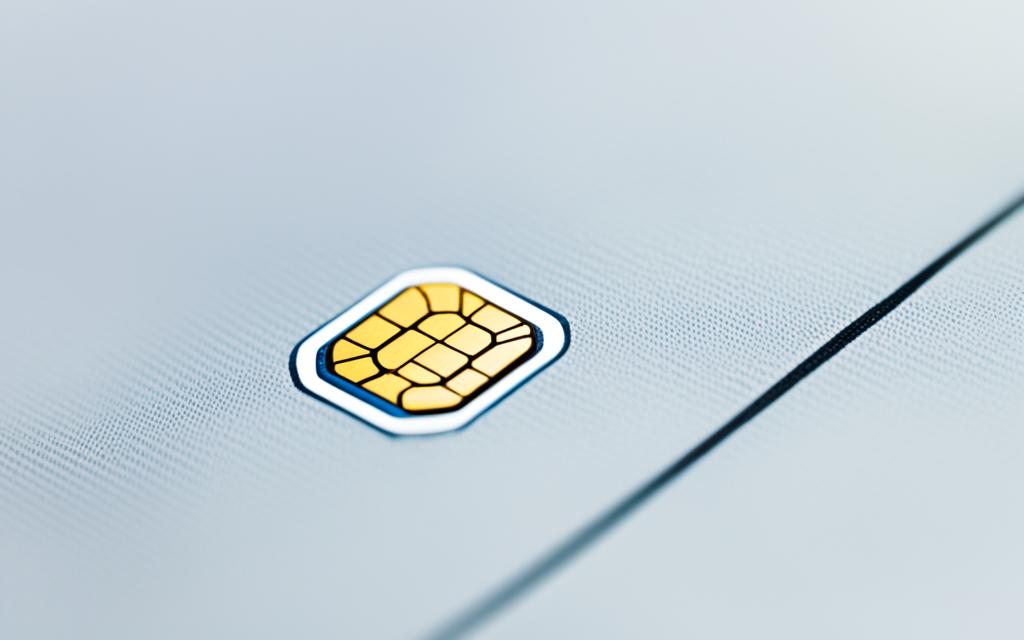SIM technology, also known as subscriber identity module, plays a pivotal role in enabling seamless mobile communication across cellular networks. SIM cards store identification information, including user identity, location, and phone number, as well as network authorization data and personal security keys. They allow users to access network features such as making calls, connecting to internet services, and sending SMS messages.
SIM cards come in various sizes, including standard SIM, micro SIM, nano SIM, and embedded SIM (eSIM). They can be easily switched between devices, offering portability and convenience. Additionally, SIM cards provide security features like authentication and encryption to protect user data.
Continue reading to learn more about the different types of SIM cards, their benefits, and the importance of SIM card security in cellular networks.
Types of SIM Cards
SIM cards are available in various types to accommodate different devices, ensuring seamless compatibility and functionality. Each type of SIM card is designed to suit specific phone models and their corresponding SIM card slots. Let’s explore the different types of SIM cards:
1. Standard SIM
The standard SIM card, measuring 25x15mm, is used in older and basic mobile phones. It is the largest type of SIM card and can be easily identified by its rectangular shape.
2. Micro SIM
Micro SIM cards, measuring 15x12mm, are commonly found in mobile phones manufactured from the 2010s onwards. They are smaller than standard SIM cards and are typically used in smartphones.
3. Nano SIM
Nano SIM cards, measuring 12.3×8.8mm, are the smallest type of SIM cards available. They are primarily used in newer smartphones and offer more space inside the phone for other components.
4. Embedded SIM (eSIM)
Embedded SIMs, also known as eSIMs, are integrated into the mobile device during manufacturing. With a size of just 6x5mm, they are significantly smaller than other SIM card types. eSIMs can be remotely activated by the network carrier, eliminating the need for physical SIM card insertion.
5. Dual-SIM
Some devices support dual-SIM functionality, allowing users to have two different SIM cards active in the same device. This feature is particularly useful for individuals who need separate contact numbers for work and personal purposes.
In summary, the different types of SIM cards, including standard SIM, micro SIM, nano SIM, embedded SIM (eSIM), and dual-SIM, provide users with a range of options to match their specific device requirements and preferences.
Benefits of SIM Cards
SIM cards offer several benefits to users, making them an essential component of mobile communication. Let’s explore some of these advantages:
Portability:
The portability of SIM cards is a significant advantage for users. By simply switching their SIM card from one phone to another, users can effortlessly associate a new device with their phone number and user preferences. This feature allows for seamless transitions between devices and eliminates the need to update contact information.
Easy Switching:
In situations where a phone’s battery is drained or in need of repair, users can easily borrow another subscriber’s phone by inserting their SIM card. This convenient switch enables users to continue making calls and accessing their contacts without utilizing the other user’s call minutes or data.
Prepaid Options:
Prepaid SIM cards provide flexible options for users, particularly travelers. These cards offer the ability to obtain a local number in their destination country without being tied to a specific carrier. Travelers can conveniently purchase prepaid SIM cards upon arrival, ensuring cost-effective and easily accessible mobile communication during their stay.
Local Numbers:
With prepaid SIM cards, users can enjoy the benefits of having a local number, enabling them to make local calls and receive local text messages. This feature enhances communication and connectivity, while also facilitating easier integration into local communities and networks.
Overall, SIM cards provide users with portability, easy switching between devices, prepaid options, and local numbers. These benefits make SIM cards an indispensable tool for managing mobile communication needs effectively and conveniently.

SIM Card Security
SIM cards play a crucial role in enabling seamless mobile communication, but they also contain sensitive information that can make them a potential target for hackers. If hackers gain access to a SIM card, they can potentially transfer the data to another card, compromising an individual’s email, banking, or social media accounts. To enhance SIM card security, users can take several measures.
- Set a PIN code: Users should set a PIN code for their SIM card to prevent unauthorized access. It is recommended to choose a PIN code that is easy to remember but difficult for others to guess.
- Change the PIN code: Regularly changing the PIN code further improves SIM card security. It is advisable to change the default PIN code to a more complex one that is not easily guessable.
- Enable authentication and encryption: SIM cards employ authentication and encryption techniques to protect user data and prevent eavesdropping. These security measures ensure that communication between the SIM card and the network is secure and encrypted, reducing the risk of data interception.
By implementing these security measures, users can significantly enhance SIM card security and protect their sensitive information. Safeguarding user data and maintaining the integrity of cellular networks is crucial in today’s digital landscape.
Benefits of SIM Card Security:
Enhancing SIM card security provides several benefits:
- Protection against hacking and unauthorized access
- Prevention of data theft and privacy breaches
- Giving users peace of mind when using mobile communication services
It is essential for users to prioritize SIM card security by following best practices and staying informed about potential security risks. By taking proactive measures, individuals can ensure the safety and confidentiality of their personal information.
Conclusion
Sim technology is a vital component in facilitating seamless mobile communication across cellular networks. Sim cards efficiently store user identification information, granting access to various network features. The portability of these cards allows for effortless switching between devices, ensuring convenience and flexibility. Moreover, sim cards come in different types to accommodate diverse device sizes, catering to the needs of a wide range of users.
Sim cards offer numerous benefits, including the ability to associate a new phone with the same number and user preferences. Users can borrow another individual’s phone without consuming their minutes by simply inserting their sim card. For frequent travelers, sim cards provide access to prepaid options and localized numbers, enabling cost-effective communication in different regions.
However, it is crucial to prioritize sim card security. By implementing strong PIN codes and leveraging authentication and encryption features, users can safeguard their sensitive information. Sim cards’ robust security measures are essential for preserving the integrity of cellular networks and protecting user data from potential threats.
In conclusion, sim technology ensures the smooth functioning of cellular networks and facilitates uninterrupted communication. With its portability, security features, and seamless integration, sim cards empower users to stay connected regardless of their location or the device they are using.
FAQ
What is SIM technology and what role does it play in cellular networks?
SIM technology, also known as subscriber identity module, enables seamless mobile communication across cellular networks. SIM cards store identification information, network authorization data, and personal security keys, allowing users to access network features such as making calls, connecting to internet services, and sending SMS messages.
What are the different types of SIM cards available?
SIM cards come in various sizes, including standard SIM, micro SIM, nano SIM, and embedded SIM (eSIM). Standard SIM cards are used in older and basic phones, micro SIM cards are commonly found in phones from the 2010s and later, nano SIM cards are used in newer smartphones, and eSIMs are already installed in the phone and can be activated remotely by the network carrier.
What are the benefits of using SIM cards?
SIM cards offer portability, allowing users to easily switch their card from one phone to another while retaining the same number and user preferences. They also enable users to borrow another subscriber’s phone by simply installing their SIM card, without using up the other user’s minutes. Additionally, prepaid SIM cards provide travelers with local numbers as long as their phones are not locked to a specific carrier.
How can I enhance the security of my SIM card?
To enhance security, users can set a PIN code for their SIM card and change it to a more complex one. SIM cards also employ authentication and encryption techniques to protect data and prevent eavesdropping.
What is the importance of SIM technology in cellular networks?
SIM technology plays a crucial role in enabling seamless mobile communication across cellular networks. It ensures the smooth functioning of cellular networks and enables users to stay connected wherever they go. SIM cards provide portability, convenience, and security features that enhance the overall user experience.



















